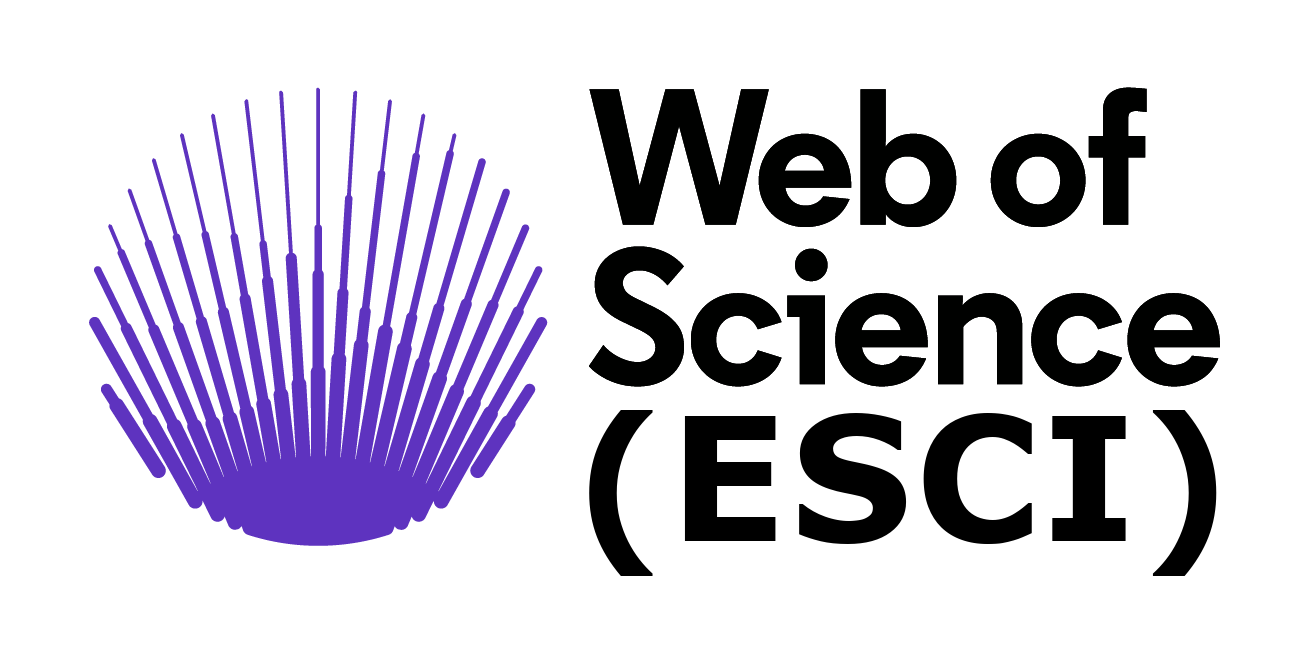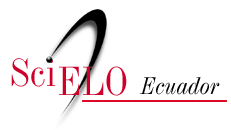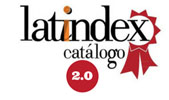Monitoreo de la eliminación de una mezcla de contaminantes farmacéuticos emergentes asistida por un soporte fijo de TiO₂ en un proceso fotocatalítico
DOI:
https://doi.org/10.29019/enfoqueute.1122Palabras clave:
Fotocatálisis, Titanium dioxide, emerging pharmaceutical contaminantsResumen
Este estudio evaluó la eficacia de la remoción de estradiol, sulfametoxazol y paracetamol del agua utilizando dióxido de titanio (TiO2<). Para ello se fijó una capa de TiO2 sobre baldosas cerámicas y se expuso a una solución de los fármacos bajo luz ultravioleta de 254 nm. El TiO2 presentó un área superficial de 2.78 m²/g con Azul de Metileno lo que favorece a la adsorción y posterior degradación de los fármacos. La foto remoción después de 60 minutos de exposición del estradiol fue del 69.43%, del paracetamol 50.84% y del sulfametaxazol 24.80%. Además, se determinó que la cinética de degradación de cada fármaco variaba, ajustándose algunos a modelos de primer orden (estradiol y paracetamol) y otro a segundo orden (sulfametaxazol). El tiempo en minutos necesario para bajar al 10% la concentración original de los fármacos fue de 107 para el estradiol, 190 minutos para el paracetamol y 244 para el sulfametaxazol. La fotocatálisis con TiO2 inmobilizado en cerámicas puede ser utilizada para el tratamiento de aguas contaminadas con mezclas de fármacos sin que se observe un efecto restrictivo entre los fármacos.
Descargas
Citas
[1] K. Fent, A. A. Weston and D. Caminada, “Ecotoxicology of Human Pharmaceuticals,” Aquatic Toxicology, vol. 76, no. 2, 2006. https://doi.org/10.1016/j.aquatox.2005.09.009
[2] L. H. M. L. M. Santos, A. N. Araújo, A. Fachini, A. Pena, C. Delerue-Matos and M. C. B. S. M. Montenegro, “ecotoxicological aspects related to the presence of pharmaceuticals in the aquatic environment,” J Hazard Mater, vol.175, no. 1-3, 2010. https://doi.org/10.1016/j.jhazmat.2009.10.100
[3] H. Wang, H. Xi, L. Xu, M. Jin, W. Zhao and H. Liu, “Ecotoxicological effects, environmental fate and risks of pharmaceutical and personal care products in the water environment: a review. science of the total environment,” vol. 788, 2021. https://doi.org/10.1016/j.scitotenv.2021.147819
[4] V. L. Marlatt, S. Bayen, D. Castaneda-Cortès, G. Delbès, P. Grigorova, V. S. Langlois, C. J. Martyniuk, C. D. Metcalfe, L. Parent, A. Rwigemera, P. Thomson and G. Van Der Kraak, “Impacts of endocrine disrupting chemicals on reproduction in wildlife and humans,” Environ Res., vol. 208, 112584, 2022. https://doi.org/10.1016/j.envres.2021.112584
[5] C. R. Tyler, S. Jobling and J. P Sumpter, Endocrine disruption in wildlife: a critical review of the evidence. Crit Rev Toxicol., vol. 28, no. 4, 1998. https://doi.org/10.1080/10408449891344236
[6] I. Vázquez-Tapia, T. Salazar-Martínez, M. Acosta-Castro, K. A. Meléndez-Castolo, J. Mahlknecht, P. Cervantes-Avilés, M. V. Capparelli and A. Mora, “Occurrence of emerging organic contaminants and endocrine disruptors in different water compartments in Mexico – A review,” Chemosphere, vol. 308, 2022. https://doi.org/10.1016/j.chemosphere.2022.136285
[7] S. Chandra, P. Jagdale, I. Medha, A. K. Tiwari, M. Bartoli, A. de Nino and F. Olivito, “Photocatalytic degradation of sulfamethoxazole in water —a review,” Toxics, vol. 9, no. 11, 2021. https://doi.org/10.3390/toxics9110313
[8] J. I. Martínez-Costa, M. I. Maldonado Rubio and R. Leyva-Ramos, “Degradation of emerging contaminants diclofenac, sulfamethoxazole, trimethoprim and carbamazepine by bentonite and vermiculite at a pilot solar compound parabolic collector. Catal Today vol. 341, 2020. https://doi.org/10.1016/j.cattod.2018.07.021
[9] V. P. P. Vélez, G. Esquivel-Hernández, I. Cipriani-Avila, E. Mora-Abril, J. F. A. Cisneros, Alvarado and V. Abril-Ulloa, “Emerging contaminants in Trans-American Waters,” Revista Ambiente & Água, vol. 14, p. e2436, 2019. https://doi.org/10.4136/AMBI-AGUA.2436
[10] S. Hernando-Amado, T. M. Coque, F. Baquero and J. L Martínez, “Defining and combating antibiotic resistance from one health and global health perspectives,” Nat Microbiol., vol. 4, pp. 1432-1442, 2019. https://doi.org/10.1038/s41564-019-0503-9
[11] C. M. Lee, N. A. B. A. Aziz, P. Palaniandy and S. S. Abu Amr, “Performance of natural sunlight on paracetamol removal from synthetic pharmaceutical wastewater using heterogeneous TiO2 photocatalyst,” Desalination Water Treat,. vol.78, pp. 341-349, Jun. 2017. https://doi.org/10.5004/dwt.2017.20879
[12] K. Poddar, D. Sarkar, D. Chakraborty, P. B. Patil, S. Maity and A. Sarkar, “Paracetamol biodegradation by pseudomonas strain PrS10 isolated from pharmaceutical effluents,” Int Biodeterior Biodegradation, vol. 175, 2022. https://doi.org/10.1016/j.ibiod.2022.105490
[13] A. Rempel, J. P. Gutkoski, M. T. Nazari, G. N. Biolchi, B. Biduski, H. Treichel and L. M. Colla, “Microalgae growth with a high concentration of emerging pollutants and phytotoxicity evaluation of cultivation wastewater,” Journal of Water Process Engineering, vol. 46, 2022. https://doi.org/10.1016/j.jwpe.2022.102616
[14] M. V. Capparelli, I. Cipriani-Avila, E. Jara-Negrete, S. Acosta-López, B. Acosta, A. Pérez-González, J. Molinero and V Pinos-Vélez, “Emerging contaminants in the northeast andean foothills of Amazonia: the case of study of the city of Tena, Napo, Ecuador,” Bull Environ Contam Toxicol, vol. 107, pp. 2-10, 2021. https://doi.org/10.1007/S00128-021-03275-8/METRICS
[15] L. Hongyan and L. Gao, Preparation and properties of Nanocrystalline α-Fe 2O 3-Sensitized TiO2 nanosheets as a visible light photocatalyst. In Proceedings of the Journal of the American Ceramic Society, vol. 89. 2006.
[16] J. Musial, D. T. Mlynarczyk and B. J. Stanisz, “Photocatalytic degradation of Sulfamethoxazole using TiO2-Based Materials – Perspectives for the development of a sustainable water treatment technology,” Science of The Total Environment, vol. 856, 159122, 2023. https://doi.org/10.1016/j.scitotenv.2022.159122
[17] M. C., Tonucci, L. P. dos Santos Xavier, A. C. da Silva, S. F. Aquino and B. E. L. Baeta, Removal of Estradiol from water with a Hybrid MIP-TiO2 Catalytic Adsorbent. Water Air Soil Pollut., vol. 231, 2020. https://doi.org/10.1007/s11270-020-04586-y
[18] Z. Shi, S. Yu, J. Nan and Q. Xiao, “The effect of multivalent anions on removal of titanium dioxide nanoparticles from drinking water sources by coagulation-sedimentation processes: efficacy and mechanisms,” Sep Purif Technol., vol. 298, 2022. https://doi.org/10.1016/j.seppur.2022.121667
[19] P. Tiwari, M. Verma, Ambika, H. Chutani, P. P. Singh, S. Kanodia and T. Verma, “Titanium dioxide-based nanoparticles and their applications in water remediation,” Journal of Environmental Engineering and Science vol. 19, no. 1, pp. 46–54, 2024. https://doi.org/10.1680/jenes.22.00095
[20] S.-Y. Lee and S.-J. Park, “TiO2 photocatalyst for water treatment applications,” Journal of Industrial and Engineering Chemistry, vol. 19, pp. 1761-1769, 2013. https://doi.org/10.1016/j.jiec.2013.07.012
[21] F. Broccoli, R. Paparo, M. R. Iesce, M. Di Serio and V. Russo, “Heterogeneous photodegradation reaction of phenol promoted by TiO2: A Kinetic Study,” Chem. Engineering, vol. 7, 2023. https://doi.org/10.3390/chemengineering7020027
[22] M. Coha, G. Farinelli, A. Tiraferri, M. Minella and D. Vione, “Advanced oxidation processes in the removal of organic substances from produced water: potential, configurations, and research needs. Chemical Engineering Journal, vol. 414, 2021. https://doi.org/10.1016/j.cej.2021.128668
[23] O. Fawzi Suleiman Khasawneh and P. Palaniandy, “Removal of organic pollutants from water by Fe2O3/TiO2 based photocatalytic degradation: a review,” Environ Technol Innov, vol. 21, 2021. https://doi.org/10.1016/j.eti.2020.101230
[24] X. Li, H. Wei, T. Song, H. Lu and X. Wang, “A review of the photocatalytic degradation of organic pollutants in water by modified TiO2”, Water Science and Technology, vol. 88, 2023. https://doi.org/10.2166/wst.2023.288
[25] O. Carp, C. L. Huisman and A. Reller, “Photoinduced reactivity of titanium dioxide,” Progress in Solid State Chemistry, vol. 32, no. 1-2, pp. 33-177, 2004. https://doi.org/10.1016/j.progsolidstchem.2004.08.001
[26] J. C. Santamarina, K. A. Klein, Y. H. Wang and E. Prencke, “Specific surface: determination and relevance,” Canadian Geotechnical Journal, vol. 39, pp. 233-241, 2002. https://doi.org/10.1139/t01-077
[27] J. Rouquerol, F. Rouquerol, P. Llewellyn, G. Maurin, and K. S. W. Sing, Adsorption by Powders and Porous Solids: Principles, Methodology and Applications. Second Edition, pp. 239-253, 2013. ISBN: 9780080970363, https://doi.org/10.1016/C2010-0-66232-8.
[28] M. Matsuoka, T. Toyao, Y. Horiuchi, M. Takeuchi and M. Anpo, Wastewater treatment using highly functional immobilized TiO2 thin-film photocatalysts. In Photocatalysis and water purification: from fundamentals to recent applications. 2013. https://doi.org/10.1002/9783527645404.ch7
[29] P. R. P. Pretto, S. M. Palácio, É. A. De Campos, C. R. Pazini and M. T. Veit, “Sulfamethoxazole photocatalytic degradation in a continuous flow reactor using artificial radiation,” Journal of Environmental Chemical Engineering, vol. 6, no. 2, pp. 1926-1933, 2018. https://doi.org/10.1016/j.jece.2018.02.018
Descargas
Publicado
Cómo citar
Número
Sección
Licencia
Derechos de autor 2025 Los Autores

Esta obra está bajo una licencia Creative Commons Reconocimiento 3.0 Unported.
Los artículos e investigaciones publicadas por la Universidad UTE, se realizan en régimen de Acceso Abierto [Open Access] en formato electrónico. Esto significa que todo el contenido está disponible de forma gratuita sin costo para el usuario o su institución. Los usuarios pueden leer, descargar, copiar, distribuir, imprimir, buscar o enlazar los textos completos de los artículos, o usarlos para cualquier otro propósito legal, sin necesidad de pedir permiso previo al editor o al autor. Esto está de acuerdo con la definición de acceso abierto de la Iniciativa de Acceso Abierto de Budapest (BOAI). Al enviar un artículo a cualquiera de las revistas científicas de la Universidad UTE, el o los autores aceptan estas condiciones.
La UTE aplica la licencia Creative Commons Attribution (CC-BY) a los artículos de sus revistas científicas. En virtud de esta licencia de acceso abierto, como autor usted acuerda que cualquier persona puede reutilizar su artículo en su totalidad o en parte para cualquier propósito, de forma gratuita, incluso para fines comerciales. Cualquiera puede copiar, distribuir o reutilizar el contenido siempre y cuando el autor y la fuente original estén correctamente citados. Esto facilita la libertad de reutilización y también asegura que el contenido pueda ser extraído sin barreras para necesidades de investigación.
Esta obra está bajo una Creative Commons Attribution 3.0 International (CC BY 3.0).
Además, la Revista Enfoque UTE garantiza y declara que los autores conservan siempre todos los derechos de autor y todos los derechos de publicación sin restricciones [© Los Autores]. El reconocimiento (BY) permite cualquier explotación de la obra, incluyendo una finalidad comercial, así como la creación de obras derivadas, la distribución de las cuales también está permitida sin ninguna restricción.






















 Enfoque UTE - Facultad de Ciencias de la Ingeniería e Industrias - Universidad UTE
Enfoque UTE - Facultad de Ciencias de la Ingeniería e Industrias - Universidad UTE